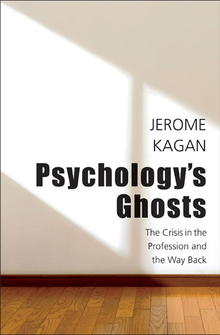Seeing in the Dark
WARNING
You are viewing an older version of the Yalebooks website. Please visit out new website with more updated information and a better user experience: https://www.yalebooks.com
Reflections on Dreams and Dreaming
Bert O. States
If we acknowledge that dreaming is a biological activity (because virtually all mammals are known to dream), then we may profitably study dreams as instances of an evolutionary process in which images survive by a form of natural selection to influence the remainder of the dream, States contends. And if dreams have any meaning, it is no different in kind from the meaning that may be given to waking experience.
In addition to evolutionary biology, States draws on cognitive psychology, anthropology, neuroscience, literary and rhetorical theory, and philosophy, as well as poetry, literature, and drama. His provocative and lively investigation of dreams will appeal to any reader curious about the mind's activity during sleep.
"States is the best writer on dreams since Freud. His engaging and eloquent book continually provokes rethinking of contemporary views of the mind, consciousness, dreaming, and the continuities between dreaming and literature."—Murray M. Schwartz
"Bert State's Seeing in the Dark is a lively and informative book, which provides an invaluable update on current dream theory. . . . It dreams of a wide readership and I hope it gets one."—Alec Marsh, Boston Book Review
"States writes with such lucidity and charm that it can well be managed by the non-academic reader with plenty of intellectual curiosity."—Rosemary Dinnage, Times Literary Supplement
"This is a well-written and genial book filled with insights into both the nature of dreams and the nature of creativity."—Harold Fromm, The Hudson Review
"The book has a wonderful essence of its own, as the author weaves humor and intelligence, creating his 'cubistic' work. . . . The book is serious and well researched, yet entertaining and fun to read. . . . An important work in dream theory and an asset to collections that incorporate multiple viewpoints. A delightful read."—Choice
"What is remarkable about this book is that, without a laboratory or a patient to work with the author develops a coherent picture of the state-of-the-art thinking of what dreams are about (emotion) and why it is that we can have some themes in common (we are all more human than otherwise), yet couch them in different images (we each develop a unique set of memory representations attached to the experiences that evoke common emotional responses). . . . What is new about the book is not so much what the author has to say about how dreams are made but the way he links this activity to creative writing in fiction, poetry, and drama. . . . [This book] is one that the intelligent, non-dream professional can read with enjoyment and from it learn how to view dreams in the wider context of creative thinking."—Rosalind Cartwright, New England Journal of Medicine
"Thoughtful and . . . entertaining. . . . As good a description of dreams as any."—New Scientist
Publication Date: January 11, 1997








